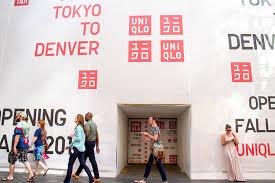Who’s in Charge?
Who’s in charge? How did this change? Why has it changed? These questions are linked to the landscape of the NBA as of now. As of June 26th, LeBron James has led the charge in creating player power in contracts, rosters, and coaching. According to the NBA, the annual salary cap was increased to $63.065 million. If a team carries 12 players on the roster, each player could earn, hypothetically, about $5.3 million. (These numbers can change dramatically with the different options and rules the league has for signing, releasing, and trading players.) Even still, this number is very high compared to an average job in the U.S. $53,891 is the average American income based on research done by CNN. The NBA salary cap will increase to a staggering $89 million for the 2016 season. Do not get used to that number, because the cap will rise to an unbelievable $108 million for the 2017 season. In less than 3 seasons the cap will jump nearly $45 million. Which, if you re-do our previous hypothetical equation to see how much a player would earn a season if the 12 player team shared the cap, the number sky rockets from $5.3 million to $9. Wow!
The reason? TV contracts. A new NBA TV contract will take effect in 2016.The New York Times values the deal at $2.66 billion per year with ESPN and Turner Time Cable. The old deal clocked in at about $445 million. Basically, everyone will become richer for the time being. Coming back to the question I led with earlier, who has the power? Overall, the owners. An owner can decide to cut or trade a player or coach at any time as long there is not a no trade clause. For the 2014 season, only 4 players had a no trade clause: Kobe Bryant, Tim Duncan, Dirk Nowitzki, and Kevin Garnett. Each of these players have won at least 1 championship, and in my opinion each will be hall of famers when they hang up their shoes. The no trade clause is rarely used. (There were 301 players on teams for opening day in 2014, so about 1% of the league.) But in contrast, the player’s power has increased dramatically since Michael Jordan was able to wield $33.1 million in 1998. That salary is amazing compared to 2015 standards because the salary was in 1998 was $32.7 million.
Looking into the future, I am unsure how the landscape will change for power. But, there are several factors that seem to paint a picture of players garnering more power heading forward. Team owners are being thwarted by fans and former players to spend money to resign players as well as prized free agents, upgrade facilities, and not be dwellers in the league record standings. With social media and fans being able to communicate with players it is hard to keep secrets about these topics. Also, elite players in basically any market can be a movie/endorsement star. Teams can no longer use the excuse that, “he left for the spotlight of L.A. or N.Y.” Kevin Durant of Oklahoma City has his own movie Thunderstruck. Portland star Damian Lillard has an endorsement deal with Adidas for up to 10 years and $100 million. Both of these markets are seen as lower tier markets. The NBA landscape has changed and the future is unknown. Players and owners will always try and take more of the pie then the other, and will always feel as if they need more. As fans we just want to see competitive basketball with both sides trying their best in order to win.
NBA Salary Cap Projected to Hit $108 Million in 2017.
Salary Cap for 2014-15 Season Jumps to $63 million.
NBA closing in on new $2 billion TV deal with ESPN, Turner.
NBA Bookkeeping: Strange Contracts, No-Trade Clauses and Other Quirks.

















You must be logged in to post a comment Login